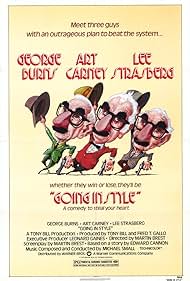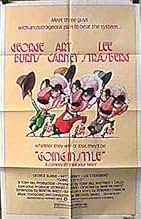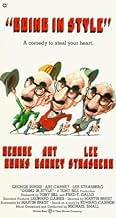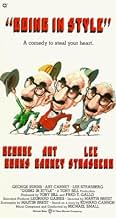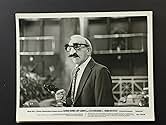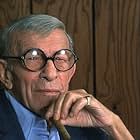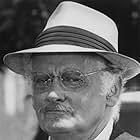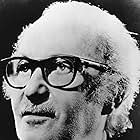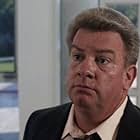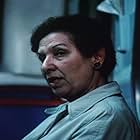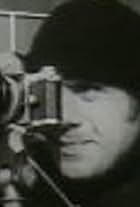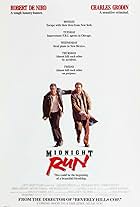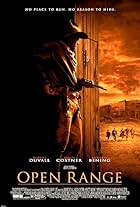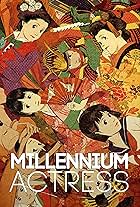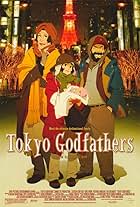IMDb RATING
7.1/10
4.2K
YOUR RATING
Three friends living on the dole decide to rob a bank.Three friends living on the dole decide to rob a bank.Three friends living on the dole decide to rob a bank.
- Awards
- 1 win & 1 nomination
Pamela Payton-Wright
- Kathy
- (as Pamela Payton Wright)
- Director
- Writers
- All cast & crew
- Production, box office & more at IMDbPro
Storyline
Did you know
- TriviaWhere Joe (George Burns) is looking through his old photos and other memorabilia, he looks at a photo of a young couple, presumably Joe and his wife, and it makes him start to cry. The photo is actually a picture of Burns and his real (late) wife and legendary stage partner Gracie Allen.
- GoofsJoe and Al leave Kennedy Airport in full daylight - yet don't arrive in Las Vegas until well after dark, an impossibility for a direct flight heading five hours west during the summer months.
Featured review
I've found it's almost impossible to predict what my opinion will be on a film that I haven't seen in many years. I recently rented both The Out of Towners (1970) and Going in Style. I hadn't seen either since at least the early 1980s, when I was still a teen. Before watching this time I would have predicted that they were both about equally good--that's what I remember from my earlier assessments. However, I ended up being slightly disappointed with The Out of Towners while I was blown out of the water by how excellent Going in Style is.
This is a film that's best to watch knowing as little as possible about the plot beforehand. For those who must know something of the story, however, it concerns three elderly men who are living together in Astoria, Queens (part of New York City)--Joe (George Burns), Al (Art Carney) and Willie (Lee Strasberg). They're on Social Security, which doesn't provide a lot of money--that's why they're living together. They spend most of their days in a park near their apartment, feeding pigeons, watching children play, and so on. Joe comes up with a very unusual idea to supplement their income and put some excitement in their lives. The first half of the film involves planning and carrying out the idea. The second half deals with the aftermath, and is kind of an extended character study.
The most remarkable characteristic of Going in Style is that writer and director Martin Brest, with co-writer Edward Cannon, managed to make a film that has elements of both almost absurdist comedy and deeply moving realist drama co-existing at the same time. Going in Style is a poignant portrait of old age, occasionally deeply sad and even pessimistic, but also very funny, and the three principal characters possess an almost Zen-like satiety, calmness and wisdom.
It's interesting to note that Brest later went on to direct films as diverse as Beverly Hills Cop (1984) and Meet Joe Black (1998). Going in Style has elements of both--Beverly Hills Cop's wacky crime-comedy and involved plot structure and Meet Joe Black's emotionally impactful minimalism and social/philosophical subtexts. Another way to describe the film might be in terms of another director, Woody Allen. Imagine Allen making Take the Money and Run (1969) or Bananas (1971), but in a mood much closer to Alice (1990) or even September (1987).
The performances are excellent, but Burns especially stands out. Joe is a very different character for him, much more serious and gruff--he's almost a bit of a "heavy". If Burns had been just a bit younger, Going in Style shows that he could have easily had a career make-over/turnaround via Quentin Tarantino, similar to John Travolta. Carney and Strasberg both easily paint complex characters, as well, and the chemistry of any two or more of them together is simply magical.
Brest, showing early inclinations towards minimalism, peppers the film with many extremely effective "pregnant pauses". These enable the cast to subtly stretch their mastery of comic timing and give more depth to the tragic or seriously emotional scenes. In both its comic and tragic modes, Going in Style tends to be a relatively "quiet" film--the tone/atmosphere reflects that Zen-like disposition that Brest and his cast create for the characters. We could easily see most of the film's "action" growing out of the pregnant pauses. Brest emphasizes this by loading early scenes with such pauses, such as when our protagonist trio are sitting on the park bench and hatching their plan.
The above might sound a bit ridiculous or overly abstract to some, but keep in mind that it's all part of Brest's touching portrait of old age (an incredible feat for a 27-year old writer-director, by the way). Joe, Al and Willie live day by day, because they figure that each might literally be their last day. They're not in a hurry to do anything. They prefer to soak up the fullness of each instant. They're mostly content with their lives and have accepted their mortal fates. Their scheme is relatively easy to pull off because with the slight exception of Willie, who interestingly has some issues from the past he is still trying to deal with and is thus a bit less comfortable with the present, they look at it as just another thing they can experience before they check out of the world, with the consequences of the scheme, no matter what they are, all having their advantages.
Brest works in a bit of sly social commentary more conspicuously into the script, as well. One example is the radio announcer who notes that the Gray Panthers are capitalizing on the events as a means to underscore the U.S.'s neglect of old folks. This is doubly clever because not only is the claim literally true, there are subtexts about opportunism, media influence, and so on. The above example is actually a very small detail in the film, but this is a film that has a wealth of such small details.
This is a film that's best to watch knowing as little as possible about the plot beforehand. For those who must know something of the story, however, it concerns three elderly men who are living together in Astoria, Queens (part of New York City)--Joe (George Burns), Al (Art Carney) and Willie (Lee Strasberg). They're on Social Security, which doesn't provide a lot of money--that's why they're living together. They spend most of their days in a park near their apartment, feeding pigeons, watching children play, and so on. Joe comes up with a very unusual idea to supplement their income and put some excitement in their lives. The first half of the film involves planning and carrying out the idea. The second half deals with the aftermath, and is kind of an extended character study.
The most remarkable characteristic of Going in Style is that writer and director Martin Brest, with co-writer Edward Cannon, managed to make a film that has elements of both almost absurdist comedy and deeply moving realist drama co-existing at the same time. Going in Style is a poignant portrait of old age, occasionally deeply sad and even pessimistic, but also very funny, and the three principal characters possess an almost Zen-like satiety, calmness and wisdom.
It's interesting to note that Brest later went on to direct films as diverse as Beverly Hills Cop (1984) and Meet Joe Black (1998). Going in Style has elements of both--Beverly Hills Cop's wacky crime-comedy and involved plot structure and Meet Joe Black's emotionally impactful minimalism and social/philosophical subtexts. Another way to describe the film might be in terms of another director, Woody Allen. Imagine Allen making Take the Money and Run (1969) or Bananas (1971), but in a mood much closer to Alice (1990) or even September (1987).
The performances are excellent, but Burns especially stands out. Joe is a very different character for him, much more serious and gruff--he's almost a bit of a "heavy". If Burns had been just a bit younger, Going in Style shows that he could have easily had a career make-over/turnaround via Quentin Tarantino, similar to John Travolta. Carney and Strasberg both easily paint complex characters, as well, and the chemistry of any two or more of them together is simply magical.
Brest, showing early inclinations towards minimalism, peppers the film with many extremely effective "pregnant pauses". These enable the cast to subtly stretch their mastery of comic timing and give more depth to the tragic or seriously emotional scenes. In both its comic and tragic modes, Going in Style tends to be a relatively "quiet" film--the tone/atmosphere reflects that Zen-like disposition that Brest and his cast create for the characters. We could easily see most of the film's "action" growing out of the pregnant pauses. Brest emphasizes this by loading early scenes with such pauses, such as when our protagonist trio are sitting on the park bench and hatching their plan.
The above might sound a bit ridiculous or overly abstract to some, but keep in mind that it's all part of Brest's touching portrait of old age (an incredible feat for a 27-year old writer-director, by the way). Joe, Al and Willie live day by day, because they figure that each might literally be their last day. They're not in a hurry to do anything. They prefer to soak up the fullness of each instant. They're mostly content with their lives and have accepted their mortal fates. Their scheme is relatively easy to pull off because with the slight exception of Willie, who interestingly has some issues from the past he is still trying to deal with and is thus a bit less comfortable with the present, they look at it as just another thing they can experience before they check out of the world, with the consequences of the scheme, no matter what they are, all having their advantages.
Brest works in a bit of sly social commentary more conspicuously into the script, as well. One example is the radio announcer who notes that the Gray Panthers are capitalizing on the events as a means to underscore the U.S.'s neglect of old folks. This is doubly clever because not only is the claim literally true, there are subtexts about opportunism, media influence, and so on. The above example is actually a very small detail in the film, but this is a film that has a wealth of such small details.
- BrandtSponseller
- May 24, 2005
- Permalink
- How long is Going in Style?Powered by Alexa
Details
- Release date
- Country of origin
- Official sites
- Language
- Also known as
- Stepping Out
- Filming locations
- Production company
- See more company credits at IMDbPro
Box office
- Budget
- $5,500,000 (estimated)
- Gross US & Canada
- $26,869,286
- Opening weekend US & Canada
- $1,781,164
- Dec 30, 1979
- Gross worldwide
- $26,869,286
Contribute to this page
Suggest an edit or add missing content

